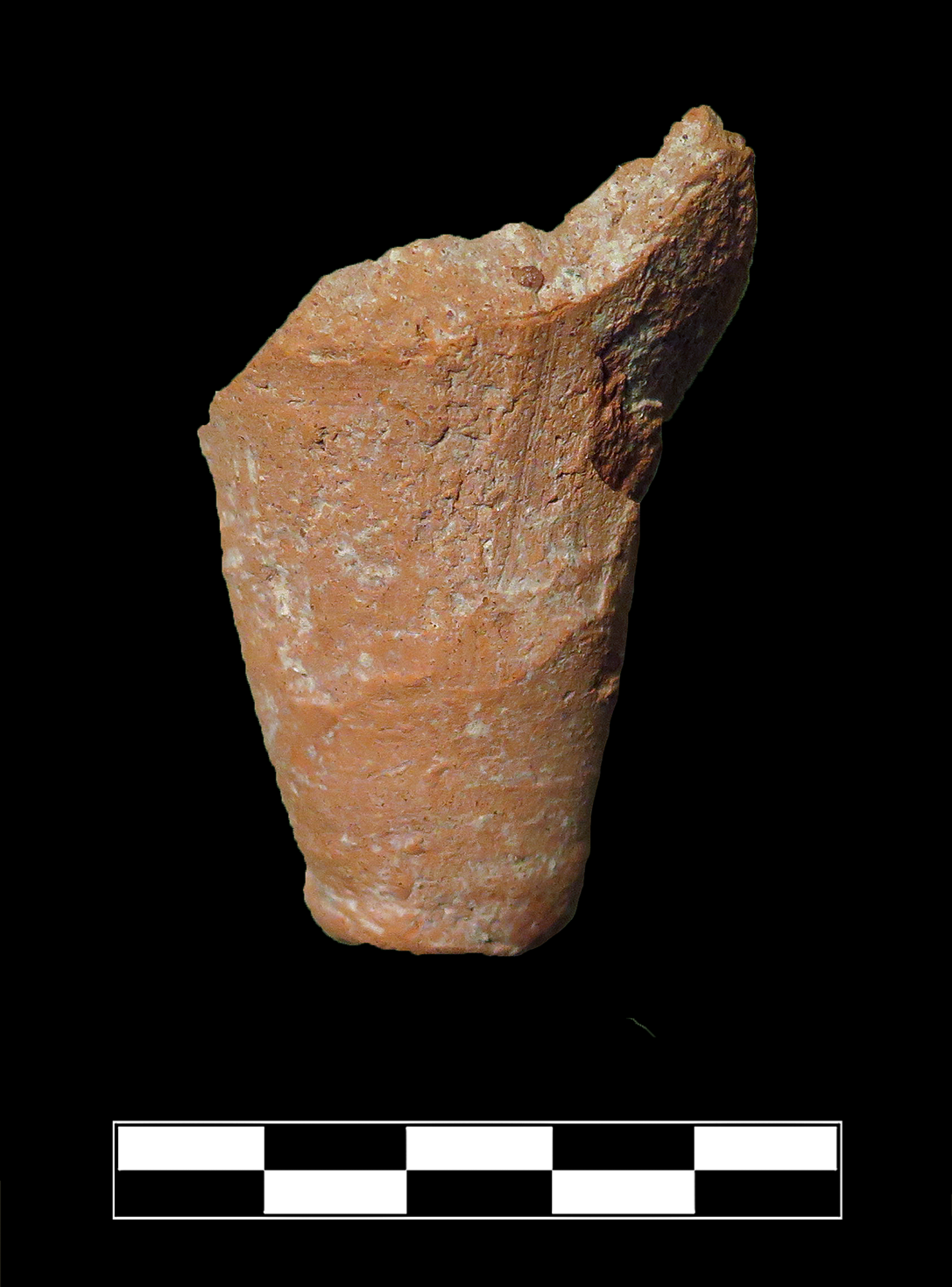- KTH0711 (Late Roman Southern Phoenician-Northern Palestinian Amphoriskos) [permalink] [next]
- Type
- Inventoried Object
- In or from KTH Container
- http://kenchreai.org/kaa/kth/kth-container-50
- Logical part of
- Threpsiades Inventoried Objects
- Typological identification
- Unclassified Amphora
- Description
- Amphoriskos. Narrow toe with excess clay, irregular form, and sloppy finishing. Narrow body, widening toward middle.
- Fabric, firing, surface
- Pale orange with a tinge red, consistently fired; hard, slightly coarse; smooth to somewhat granular break; common, small, well sorted, sandy inclusions, mostly rounded to spherical: many dark red and brown, few white and light gray (quartizitic and calcareous); very rare, medium, angular, white chunks (chalk or limestone?); very rare, large, subrounded, red stones; very rare, small to medium, subangular, bluish gray stoney inclusions. Sim. to Northern Galiliean-Southern Phoenician fabric represented by KTH1199, KTH2046, and 2058; but distinguished by less lime and presence of bluish gray chips. Cf. KTH0686 and KTH1372 (Agora M334 similis but different forms from this).
- Preservation description
- One sherd preserves entire toe and small part of lower body. Slight, sparse abrasion; somewhat worn breaks; thin patches of encrustation.
- Base Diameter
- 0.0259
- Preserved height
- 0.0626
- Has geographic origin
- Palestine
- Has geographic origin
- Phoenicia
- Material
- Ceramic (Material)
- Drawing
-

- Photograph
-


